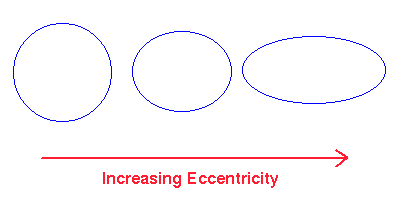This week I'm focusing on finding out more information about planetary orbits. Firstly I'd like to recap on some of the thoughts in the previous blog following this weeks meeting with Rob Lothian (my project supervisor);
- Planetary bodies - due to the complex nature of getting the actual planets to orbit, creating different orbits for moons may be too much for this project. I think I'd like to include moons - at the very least for the Earth - but this is something that will need to be considered later in the project.
- A third scale may be required for the Sun (the first being distance between the planets, and the second the size of the planets in relation to each other). This is however something that can be looked at and played around with once the basic orbital coding is done.
- Selecting a starting date for the program will just be done using accurate data, not using any "planetary alignments", so to speak.
Now, on to this weeks work. Following the honours project talk we had midweek, I've starting producing a Mind Map. Hopefully mainting this and the blog will prove extremely useful when it comes to writing up the final report for this project.
For this weeks research on orbits, I have been using a variety of websites -
applet-magic states that a planets orbit is calculated by the balance between the gravitational attraction between the planet and the Sun, and the centrefugal force from it's movement in a approximately circular orbit.
The site details that in order to calculate a planets orbit, five main points - called Lagrangian points - are needed. It goes on to explain the math behind this, although it doesn't appear to be finished. To be honest, the math goes right over my head, and it's very difficult to understand.
On the same website -
http://www.applet-magic.com/orbital.htm - they have a table of orbital velocities which also includes information on the length of a year and the orbital radii of the planets, in relation to the Earth.
One important point to note about orbits is that they are not circular, they are elliptical, and each planet has an eccentricity value between 0 and 1 - the close to 0, the more circular the orbit, the closer to 1, the more flat.
I found a useful table documenting these values for 6 of the 8 planets:
| Planet |  |
| Mercury | 0.206 |
| Venus | 0.007 |
| Earth | 0.017 |
| Mars | 0.093 |
| Jupiter | 0.048 |
| Saturn | 0.056 |
Upon further study, perhaps a better way to calculate the orbit of the planets would be to use Kepler's Law's of Planetary Motion. These are (from
istp.gsfc website):
- Planets move around the Sun in ellipses, with the Sun at one focus
- The line connecting the Sun to a planet sweeps equal areas in equal times.
- The square of the orbital period of a planet is proportional to the cube (3rd power) of the mean distance from the Sun (or in other words--of the"semi-major axis" of the ellipse, half the sum of smallest and greatest distance from the Sun). Shown below (from this website):
The
astro-tom website explains how Kepler's third law can be used to calculate the orbits of other planets, given certain data. The equation used is;
P (years)2 = R (A.U.s)3
Where P is the period of the planets (measured in Earth years), and R is the length of the semi major axis of the planet's orbit (measured in an astronomical unit, the average seperation of the Earth from the Sun).
The website demonstrates how the semi-major axis length of Mars can be calculated given it's orbital period.
On the
istp.gsfc website, an alternate equation is given:
r = a(1 – e2)/(1 + e cos f)
Where a is the length of the planet's semi major axis, e is the eccentricity value and the polar coordinates are (r,f).
Overall, I'm pretty confused about which equations I should be using, and even how to implement them, so this is definately something I will need to discuss with Rob.
Interesting links
http://dunnbypaul.net/ssdisckit/ - a complex digital orrery. Contains useful references.
http://cfa165.harvard.edu/software/catalogs/sao.html - Star catalog, lots of information on many stars.
http://www.exploratorium.edu/ronh/solar_system/ - Scaling calculator - calculates planet sizes and orbits given a scaled size of Sun. Contains a link to given scaled sizes of moons and various other satellites too.
http://www.burtleburtle.net/bob/physics/solar.html#ref - small digital orrery, lots of useful references
 )
)









